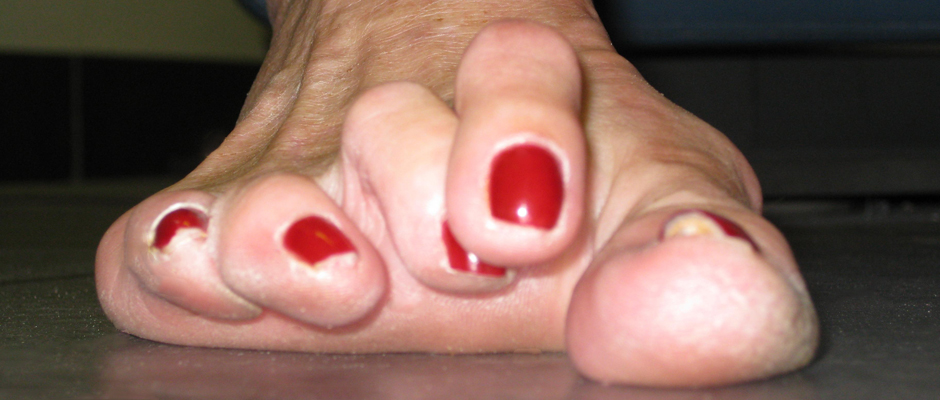Definition: a claw-like deformity of a toe, usually the second or third, in which there is flexion of the second and third interphalangeal joints
Medical terminology: deformity of the proximal interphalangeal joint of the toe

What is a hammer toe?
Hammer toe is a contracture of the little joints (interphalangeal joints) of the toes and is common in the second, third, fourth, or fifth toes. The claw-like deformity can cause abnormal pressure on the toe when wearing shoes, causing problems to develop.
Hammer toes usually start out as a flexible deformity with mild to no symptoms that can often be managed with non-invasive measures. Because of the progressive nature of hammer toes, hammer toes get progressively worse over time. If left untreated, hammer toes can become more rigid and will not respond to non-invasive, conservative treatment.
Common symptoms of hammer toes include:
What are common causes of a hammer toe?
The most common causes of hammer toe are muscle/tendon imbalance caused by poor biomechanics of the foot, muscle atrophy (loss of muscle) or bony changes due to conditions such as rheumatoid arthritis, osteoporosis and ill-fitting footwear. Trauma and genetics can also be reasons for having hammer toes.
What is the treatment for hammer toes?
There are several conservative, nonsurgical treatment options. Consult your foot specialist to determine what treatment options will be most effective for you. The Foot Guy, David Allison, can provide the necessary conservative treatment options and incorporate treatment options, such as:
When do I need surgery for a hammer toe?
Non-invasive/conservative treatment usually fails when the hammer toe has become more rigid and painful. When the hammer toe has progressed into a rigid bony deformity, or when a constant open sore has developed, surgery is needed.
Orthopedic surgeons, as well as Chiropodists, are able to take x-rays to determine the degree of the deformities and select the procedure needed to correct the hammer toe. The length of the recovery period will vary depending on the extent of your deformity, the number of toes involved, your age, your activity level, and the procedure performed.

